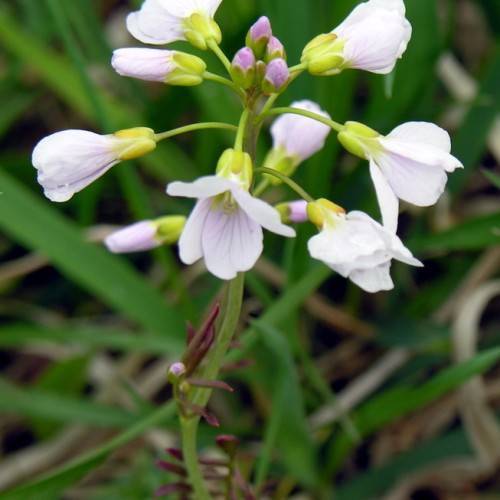
Littleleaf Bittercress
Cardamine microphylla
Also Known As - Small Leaf BittercressWatering:
Frequent
Hardiness Zone:
Sun:
part shade,full shade
Leaf:
Yes
Growth Rate:
Low
Poisonous To Pets:
Yes
Salt Tolerant:
Yes
Invasive:
Yes
Care Level:
Medium
watering
Narrow-Leaved Bittercress should be watered 2 to 3 times per week. When watering, each plant should be given approximately 1 to 2 inches of water. When possible, water should be applied directly to the soil, avoiding the leaves and stems of the plant. Allow the soil to dry out in between watering. During the winter months, water only when the soil is nearly dry.
sunlight
Narrow-Leaved Bittercress does best in full sun, meaning it should receive at least 6-8 hours of direct sunlight each day. This plant prefers morning light and should be placed in a sunny spot with direct sun until late afternoon. If the plant is receiving too much direct sun, its leaves may become sunburned and yellowed. The ideal conditions for this plant are morning light and afternoon shade, or filtered sun exposure throughout the day. Additionally, this plant can tolerate some light shade, although growth, flowering, and foliage may be less robust under these conditions. It's important to keep in mind that this plant is a winter-flowering species, so the amount of sunlight it needs may reduce during the winter months.
pruning
Narrow-Leaved Bittercress (Cardamine impatiens) should be pruned twice a year — once in late winter and again in mid-summer. In late winter, pruning should be done before the plant begins to grow again, typically when it’s still dormant. Remove any stems that are thin and weak, as well as any stems that are crossing or growing in an awkward direction. This will help keep the plant looking neat and encourage vigorous growth. In mid-summer, trim off any stems that have died back, as well as any old flowers. Pruning at this time will also help the plant to retain its shape and size, and encourage regrowth.
